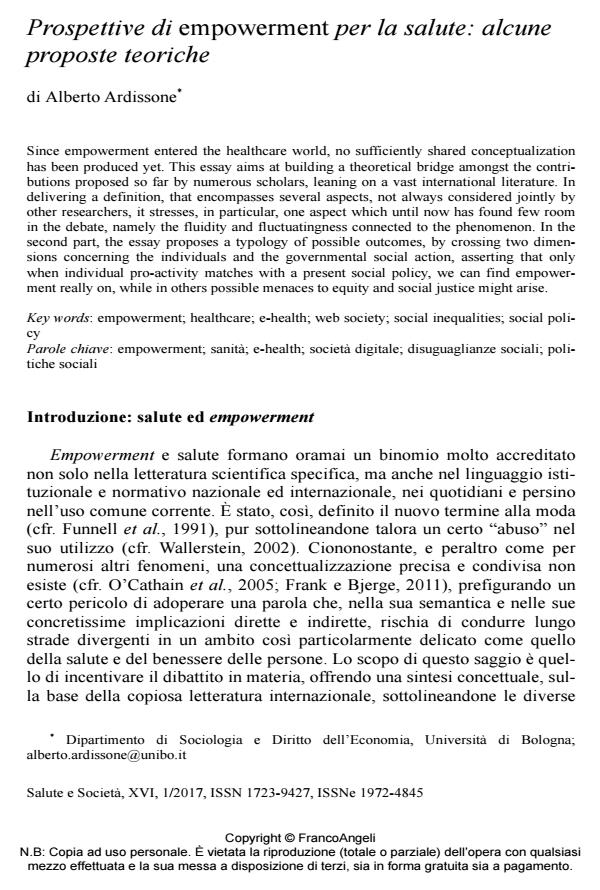Prospettive di empowerment per la salute: alcune proposte teoriche
Titolo Rivista SALUTE E SOCIETÀ
Autori/Curatori Alberto Ardissone
Anno di pubblicazione 2017 Fascicolo 2017/1
Lingua Italiano Numero pagine 17 P. 163-169 Dimensione file 704 KB
DOI 10.3280/SES2017-001012
Il DOI è il codice a barre della proprietà intellettuale: per saperne di più
clicca qui
Qui sotto puoi vedere in anteprima la prima pagina di questo articolo.
Se questo articolo ti interessa, lo puoi acquistare (e scaricare in formato pdf) seguendo le facili indicazioni per acquistare il download credit. Acquista Download Credits per scaricare questo Articolo in formato PDF

FrancoAngeli è membro della Publishers International Linking Association, Inc (PILA)associazione indipendente e non profit per facilitare (attraverso i servizi tecnologici implementati da CrossRef.org) l’accesso degli studiosi ai contenuti digitali nelle pubblicazioni professionali e scientifiche
Since empowerment entered the healthcare world, no sufficiently shared conceptualization has been produced yet. This essay aims at building a theoretical bridge amongst the contributions proposed so far by numerous scholars, leaning on a vast international literature. In delivering a definition, that encompasses several aspects, not always considered jointly by other researchers, it stresses, in particular, one aspect which until now has found few room in the debate, namely the fluidity and fluctuatingness connected to the phenomenon. In the second part, the essay proposes a typology of possible outcomes, by crossing two dimensions concerning the individuals and the governmental social action, asserting that only when individual pro-activity matches with a present social policy, we can find empowerment really on, while in others possible menaces to equity and social justice might arise.
Parole chiave:Empowerment; sanità; e-health; società digitale; disuguaglianze sociali; politiche sociali
Alberto Ardissone, Prospettive di empowerment per la salute: alcune proposte teoriche in "SALUTE E SOCIETÀ" 1/2017, pp 163-169, DOI: 10.3280/SES2017-001012